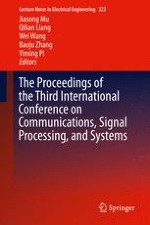2015 | OriginalPaper | Buchkapitel
18. Sub-dictionary Based Joint Sparse Representation for Multi-aspect SAR Automatic Target Recognition
verfasst von : Liyuan Xu, Zongjie Cao
Erschienen in: The Proceedings of the Third International Conference on Communications, Signal Processing, and Systems
Aktivieren Sie unsere intelligente Suche, um passende Fachinhalte oder Patente zu finden.
Wählen Sie Textabschnitte aus um mit Künstlicher Intelligenz passenden Patente zu finden. powered by
Markieren Sie Textabschnitte, um KI-gestützt weitere passende Inhalte zu finden. powered by
